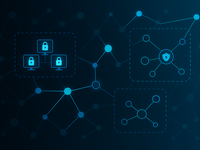
Blog
The Hidden Savings of Micro-Segmentation: A Prescription for Lower Cyber Insurance Costs
12 min read
December 31, 2025
Read more

Blog
12 min read
December 31, 2025
Read more

Cyber Risk Advisory
December 29, 2025
Read more


Compliance
December 17, 2025
Read more

Cyber Risk Advisory
December 15, 2025
Read more


Coalfire Article
December 10, 2025
Read more

Healthcare GRC
December 5, 2025
Read more
